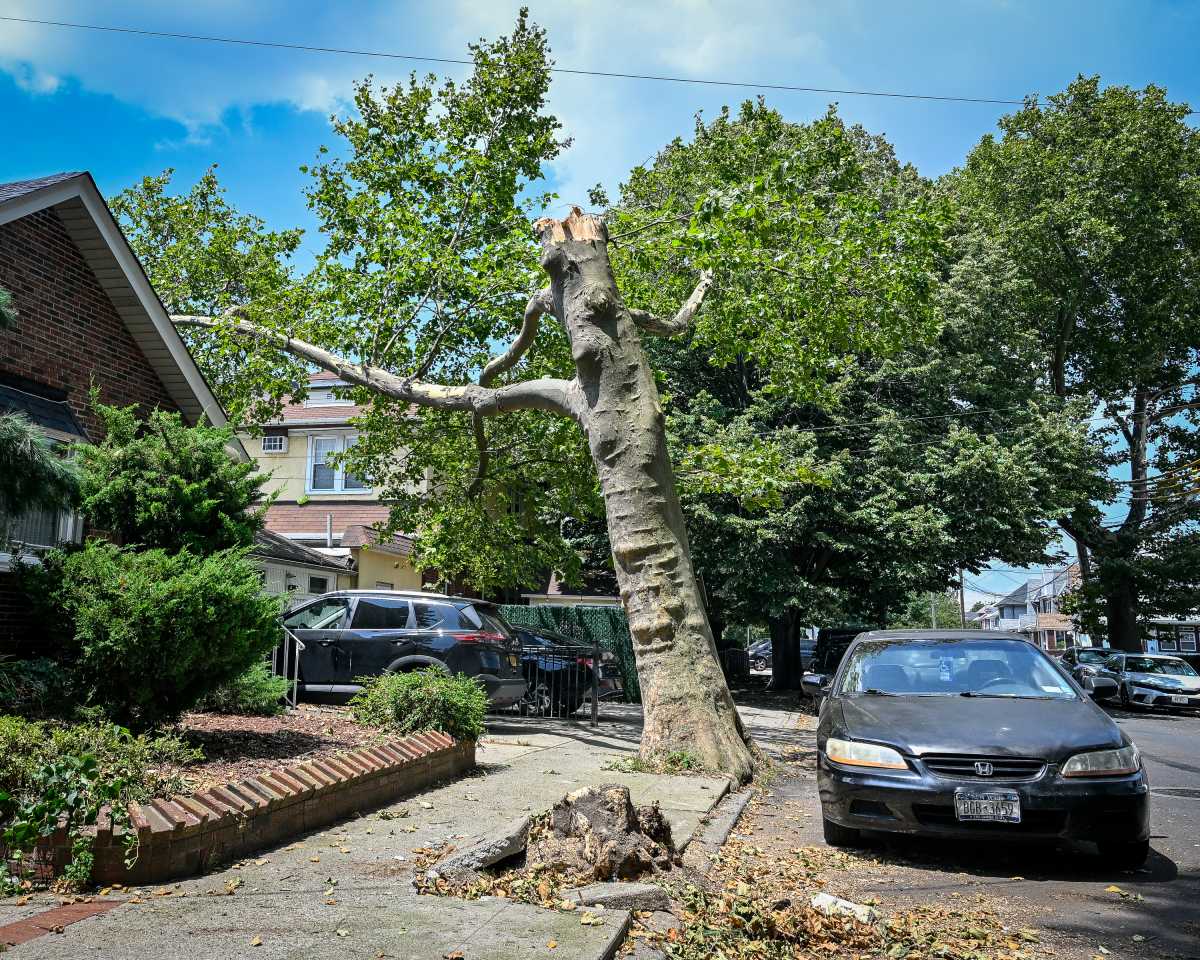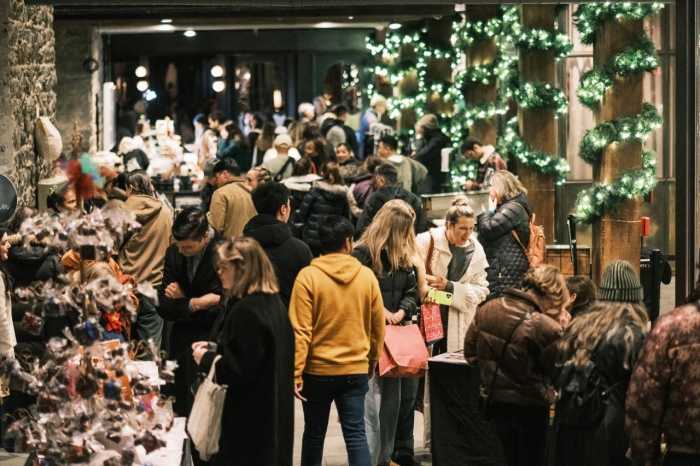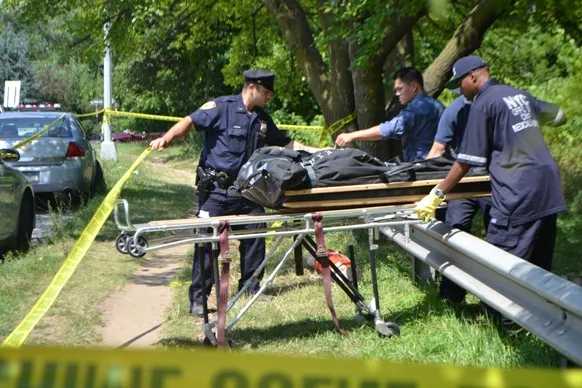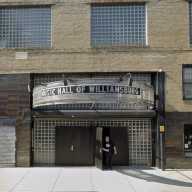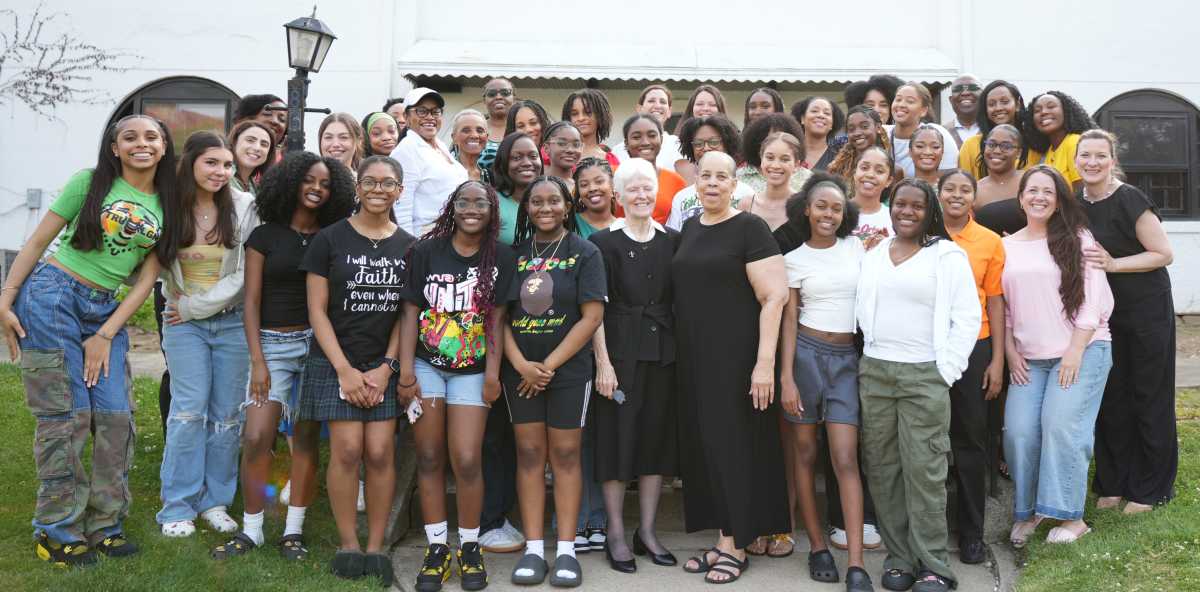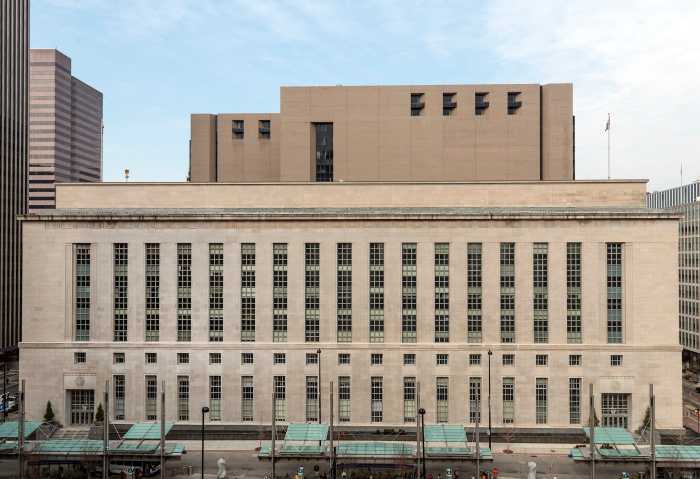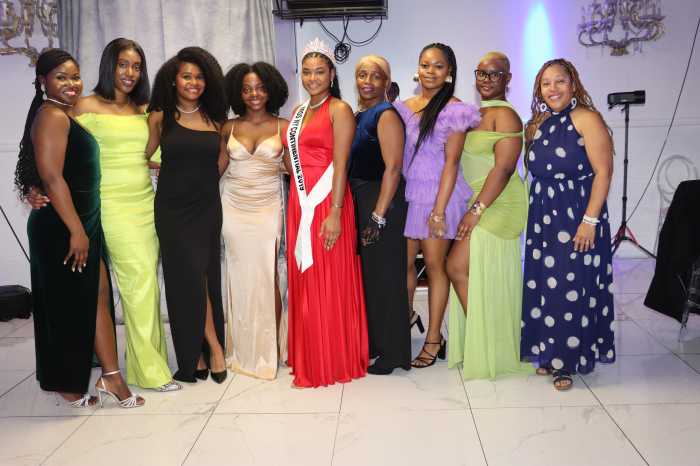A fast-moving storm that tore through Marine Park on July 25 did more than just knock down trees — it sparked growing fears among residents that aging, damaged street trees could pose a serious threat to their safety and property.
A tree on Coleman Street between Quentin Road and Avenue R snapped in half during the storm, triggering a domino effect that brought down a second street tree, which then toppled onto a tree on a resident’s property.
While most of the debris has since been cleared — though the snapped tree still stands, leaning slightly — homeowners on the quiet, tree-lined block worry that other trees, including one showing signs of termite damage, could topple and cause property damage or, worse, injure or kill someone during the next severe storm.
Homeowners who spoke with Brooklyn Paper said the New York City Parks Department has been unresponsive to their concerns about the health and condition of the street trees, despite filing numerous service requests over the years.
John Lonie, who has lived on the block for 30 years, said he’s worried the mature tree in front of his house — which is leaning toward his property — is going to topple.
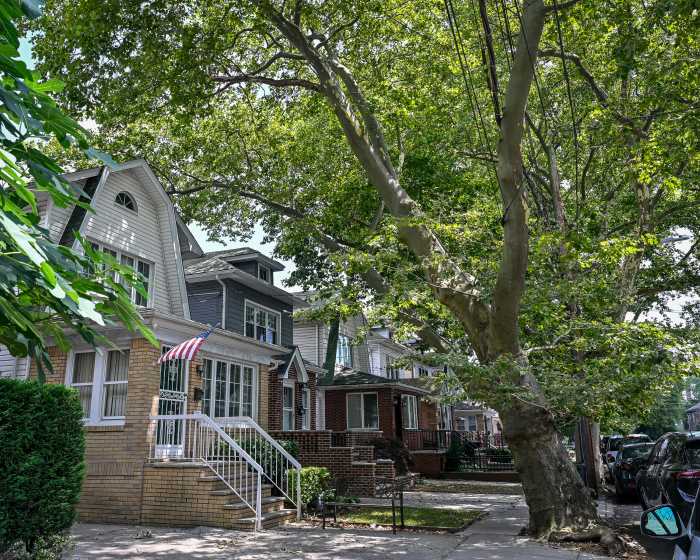

“Every time there’s a gust of wind, I’m afraid [the tree] is just going to fall,” Lonie said.
The tree’s branches have formed a canopy over the roofs of his home and his neighbor’s. Lonie told Brooklyn Paper that in June, a large branch fell onto the electrical wires between the two houses while his neighbor’s daughter was playing soccer in the driveway.
“The fire department had to come. They took the branch down and did what they had to do,” Lonie said. “It’s just an issue of trying to get in touch with somebody [at NYC Parks]. It just seems like it’s gonna take a death, God forbid, or something really bad to happen before they just come and prune some of these trees or even cut some of them down.”
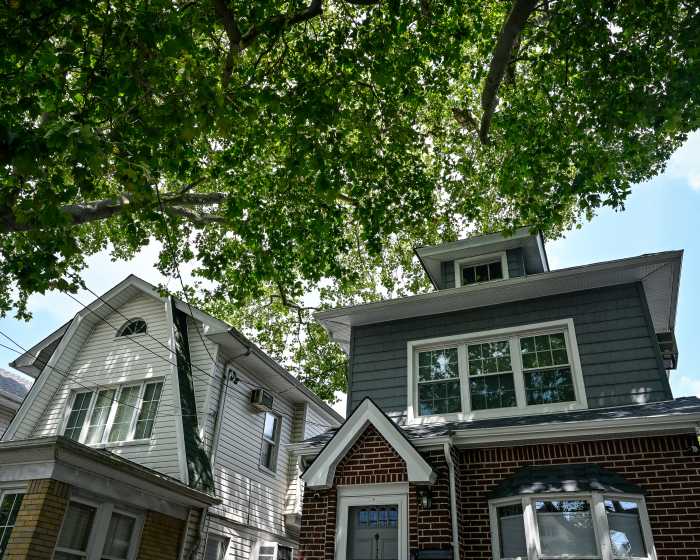
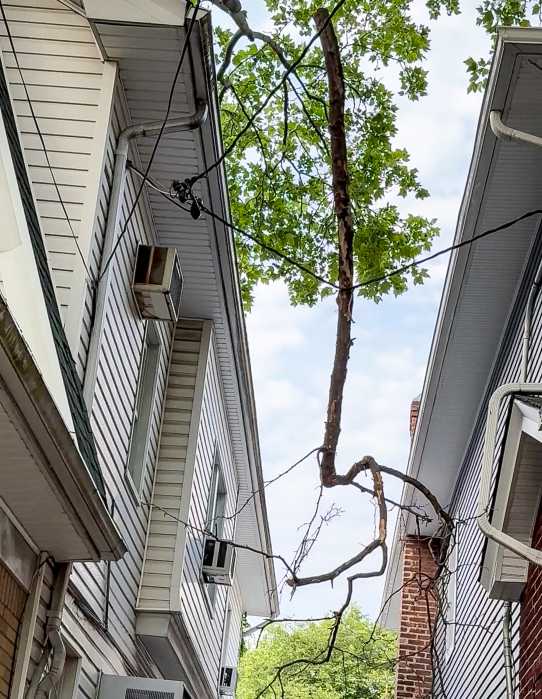
Michael Young, a Coleman Street resident for 35 years, pointed to a 480,000-volt line that was touching the tree branches.
“All the trees have grown over the [volt lines]. And that particular tree that you’re looking at, if you see the bend on it, that line is supporting that tree from falling, because it’s got tension on it. So, it’s dangerous,” Young said.
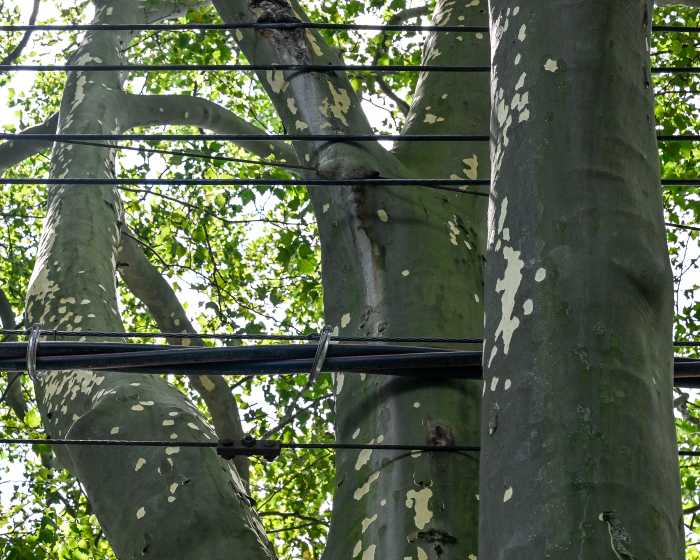
Young showed Brooklyn Paper a neighbor’s house where tree limbs were covering the chimney and boiler exhaust, posing a risk of carbon monoxide poisoning.
Another tree, he said, was struck by lightning about 10 years ago and sounded hollow. It also showed signs of termite damage.
“If the city is supposed to maintain [the trees], they need to do a better job at it, and they have the funds,” Young said. “They pick and choose the jobs they want to do, and they say, ‘Well, we only have five trucks servicing an entire city.'”

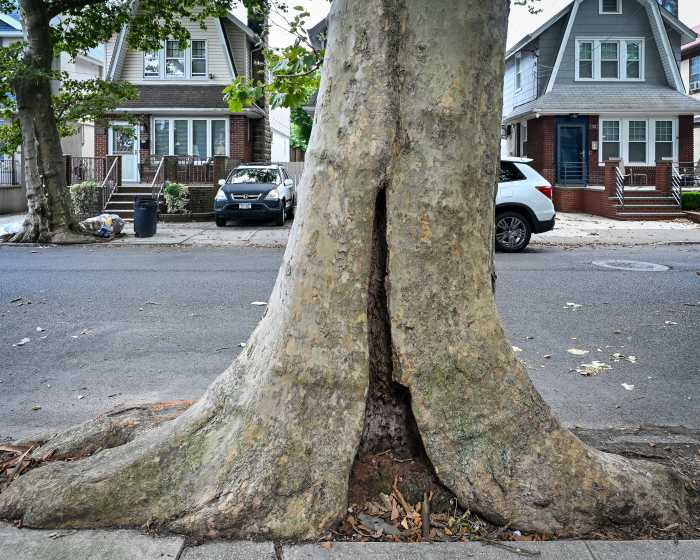
Randi and Philip Green, who live a few houses up the block, are facing the same issue with tree branches hanging over their roof. The couple told Brooklyn Paper they would cut the branches themselves but couldn’t, since only authorized NYC Parks personnel or individuals with a valid Tree Work Permit are allowed to prune city trees.
“God forbid if it breaks my roof, who is paying for it?” Philip Green said.
“I’ve been calling since we moved in here, and nothing. There is never a response,” Randi Green added.
NYC Parks told Brooklyn Paper the agency had received a complaint regarding a tree at 1747 Coleman St. and would dispatch an inspector “as available.”
The department also said it inspected a tree at 1371 Coleman St. in February 2025 and created a work order for pruning. The order was prioritized based on the level of risk presented by the tree’s condition.
A spokesperson explained that tree work is prioritized using a technical risk assessment process, in line with industry standards set by the International Society of Arboriculture (ISA) and the American National Standards Institute (ANSI).
Inspectors consider three factors when determining a tree’s risk level: the likelihood of failure, including defects such as broken or hanging branches, cracks, or dead limbs; the likelihood of impact, or the chance of the tree or its parts falling on people or property — especially in high-traffic areas; and the consequences of impact, which assess the potential harm based on the tree’s size, the characteristics of the location, and other factors.
The agency added that, in addition to its tree maintenance program, New Yorkers may hire a qualified arborist to perform work. Anyone performing work on or within 50 feet of a city tree must obtain a Tree Work Permit from Parks before beginning.
In the meantime, Lonie is turning to local elected officials for help. He recently contacted the office of Council Member Mercedes Narcisse, whose district includes Marine Park. Her office said it has followed up with both Con Edison and NYC Parks multiple times.
“Our office is staying on it and pressing the relevant agencies for immediate action,” a spokesperson for Narcisse said.
According to a Con Edison spokesperson, Con Edison inspected the location on July 30, removed a broken branch, and trimmed near the resident’s service wire, which runs from the street to the customer’s house.
Regarding the wires that are near the tree, Con Edison said that to ensure the cables are completely free, the tree would have to be removed.
Our directive was to do some pruning, but we can remove the tree if that was the directive. We do not believe the current situation poses any imminent danger,” the spokesperson told Brooklyn Paper.
Update 7/31/25 1030 a.m.: This story has been updated with comment from Con Edison.


